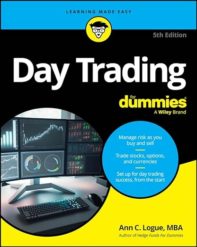One of my big challenges in teaching is to get students to think about equations as a way of communicating, as the grammar of finance, rather than as facts to be memorized.
I learned how to crochet as a child, a thing I did with some friends to kill time in the summer. I’ve taken it up again as an adult because I found that it is one of the few things I can do as a passenger on a long car ride that won’t trigger motion sickness. Mostly, I make simple scarves for my church’s food pantry to distributed every winter – nothing fancy.
But, the more I do it, the more interested I am in trying something a bit more complicated.
I found out about a crochet-a-long project in conjunction with Downton Abbey that seemed like fun. The pattern designer sends out part of the instructions for a shawl every Sunday morning through Ravelry, a popular site for people who do needlework. The idea is that we will work on it while watching the show, with discussion on Ravelry to help people through any problems they may have.
The first week’s instructions were seriously problematic. They were not written in the usual convention of crochet patterns, and most of the discussion was about different attempts to translate them. Finally, the designer issued revised instructions, and the project is turning out to be lovely. She was trying to communicate the idea of the shawl and needed the language to do it. Once that was in place, it all came together.
The situation got me thinking about formal languages.
Most of my US-educated students have a real gap about math. They don’t like it, and they don’t know how to use it. They have this sense that the way to use an equation is to memorize it, plug in the numbers given on an exam, and then get an A. They don’t grasp that an equation is a way of expressing an idea, and that the idea is often a theoretical one where it isn’t important to solve it. The purpose is to describe an idea in a simple way.
I did that, too, for a long time. One of my major epiphanies in college was that instead of memorizing an equation, I should write it out longhand, actually translating it so that I could understand what it meant in my own language. Thus, something like re = B(rm-rf) +rf meant the same as “the return on an investment can be thought of as the amount of risk it has relative to the market, times the risk premium on the market, plus the risk-free rate – because you always get the risk-free rate.” That made it a lot easier to understand what was happening.
Think about learning a language. You start by getting down simple phrases by rote. “Buenos dias, señora.” Then, as you learn more words, you move into grammar, which is practiced in part with translation. Do you understand the meaning that is added by the way that the words are arranged? And you realize almost right away that you can’t memorize sentences any more; there’s too much to remember. You have to learn how the sentence structure works.
And then, after a while, you reach a point where you can understand at least some sentences without translating them.
In English, I can do it all. I can handle math as used in finance, but not math much beyond statistics. With Spanish, I can understand a little without translation. I translate a lot of sentences as I read them, and I really need practice.
With crochet, I am at the point where I can understand simple instructions with little variation, and I certainly can’t write a pattern.
I can’t read music at all.
The challenge for my students is to get them to think of math as grammar. How? I’m always looking for ideas.



